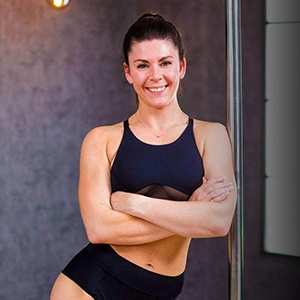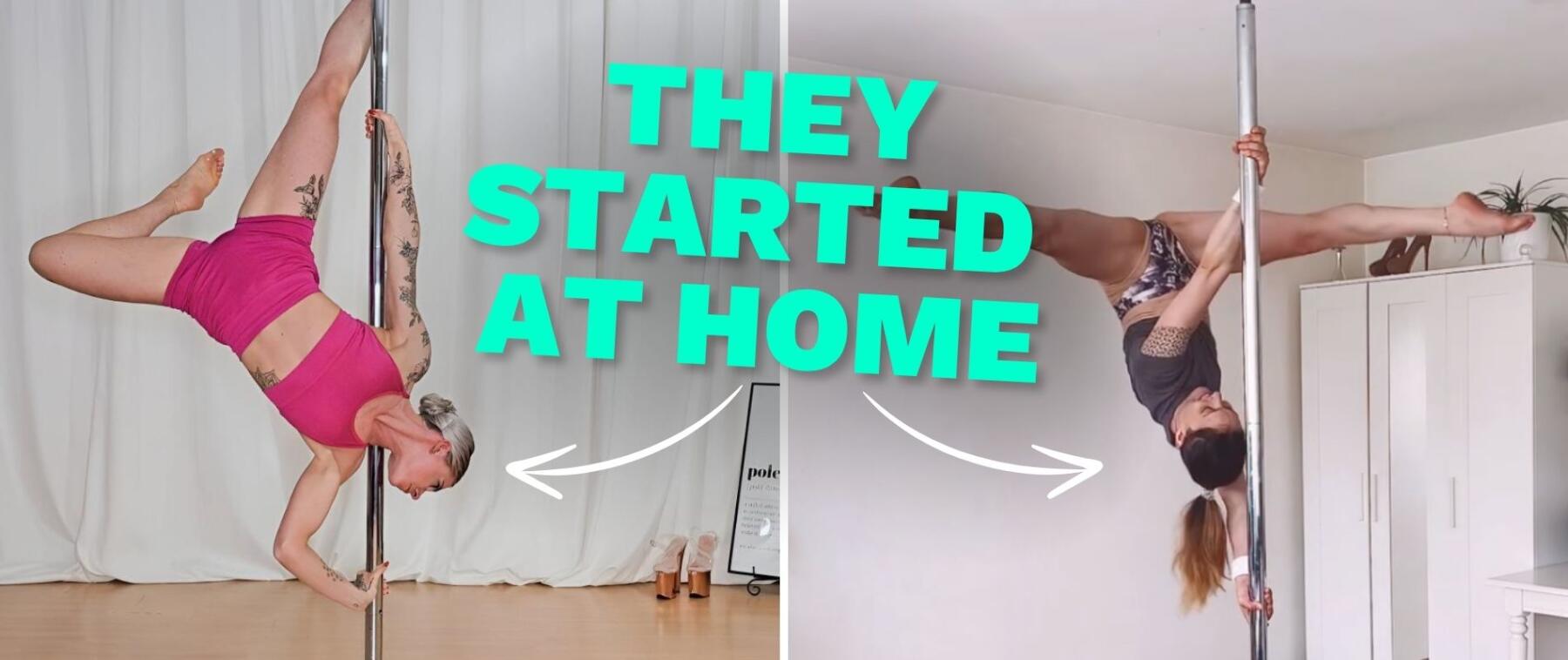How cycle syncing can drastically improve your pole dancing routine

AUTHOR:
DATE:
May 19, 2024
For our Co-Founder Carmen, Cycle Syncing was a real game changer, when it comes to pole dancing. Understanding and aligning your pole training with your menstrual cycle can significantly boost your performance and overall well-being. Let's explore why this is important and how each phase of your cycle can influence your pole dancing practice.
Why Cycle Syncing Matters in Pole Dancing
Have you ever had days where you felt unstoppable on the pole, and other days where everything seemed impossible? That might be your menstrual cycle at work. Hormonal fluctuations throughout your cycle can impact your energy levels, strength, and mood. By syncing your workouts with these changes, you can maximize your performance on good days and give yourself grace on the tougher ones. It's all about working with your body, not against it.
For many pole dancers, ignoring the natural rhythm of their bodies can lead to unnecessary frustration and even injury. Understanding how your menstrual cycle affects your physical and emotional state allows you to tailor your training routine to match your body's needs. This not only enhances your performance but also promotes long-term well-being. Let's break down each phase and see how you can optimize your pole training.
Phase 1: Menstruation (Days 1-5)
During menstruation, your body is shedding the uterine lining, and hormone levels, particularly estrogen and progesterone, are at their lowest. This can lead to feelings of fatigue, bloating, and discomfort. It's crucial to listen to your body during this phase and prioritize rest and self-care.
For pole dancers, high-intensity training might not be ideal during menstruation. Instead, focus on gentle stretching and low-impact exercises. These can help alleviate cramps and improve your mood without putting too much strain on your body. Incorporating activities like yoga, Pilates, and light stretching can keep you active while honoring your body's need for rest.
Here's what happens in your body: The drop in hormone levels can cause a decrease in energy and endurance. You might feel more sensitive to pain and have less motivation to train. However, this is a great time to work on flexibility and mindfulness. Gentle pole exercises like slow spins, floorwork, and flow routines can be both soothing and beneficial.
Phase 2: Follicular Phase (Days 6-14)
As you move into the follicular phase, estrogen levels start to rise, leading to an increase in energy, stamina, and overall well-being. This is the time when many women feel their best and most motivated to tackle challenging pole tricks and routines.
This phase is perfect for focusing on building strength and mastering new skills. Your body is primed for intense workouts, so take advantage of this energy boost to push your limits and try those tricks you've been eyeing. Work on developing your upper body and core strength with exercises like pole climbs, inverts, and more advanced spins.
Here's what happens in your body: The rising estrogen levels enhance your muscle recovery and increase your pain tolerance, making it easier to push through tougher workouts. You'll likely feel more optimistic and ready to take on new challenges. Embrace this phase by setting ambitious goals and enjoying the process of achieving them.
Phase 3: Ovulation (Day 15-19)
Ovulation marks the peak of estrogen levels, triggering the release of an egg from the ovary. Along with increased estrogen, testosterone levels also rise, enhancing energy, agility, and muscle performance. Many women experience a surge in creativity and confidence during this time.
During ovulation, you'll likely feel unstoppable. Use this phase to explore more dynamic and complex movements on the pole. It's a great time to film your progress and celebrate your achievements. Incorporate advanced tricks, combinations, and even choreograph new routines. Your body is at its peak performance, so make the most of it.
Here's what happens in your body: The combination of high estrogen and testosterone levels boosts your coordination and overall physical capability. You'll find it easier to learn new tricks and execute them with precision. This phase is ideal for challenging yourself and expanding your repertoire of pole tricks.
Phase 4: Luteal Phase (Days 20-28)
In the luteal phase, estrogen levels drop while progesterone levels rise, leading to potential mood swings, bloating, and fatigue. As hormone levels fluctuate, energy levels may dip, and some women may experience increased sensitivity to pain.
It's essential to practice self-compassion during this phase. Adjust your training to include gentle stretching, flexibility work, and low-impact exercises. This will support your body through these changes and help you maintain your progress without pushing too hard. Focus on refining techniques and improving your flexibility during this phase.
Here's what happens in your body: The hormonal changes can cause a decrease in endurance and motivation. You might feel more sluggish and less inclined to engage in high-intensity training. Embrace this phase by focusing on mobility exercises, restorative yoga, and mindfulness practices. Listen to your body and allow it the rest it needs.
Conclusion
Understanding how your menstrual cycle influences your energy levels and mood can empower you to optimize your pole dancing training. By syncing your training intensity and focus with each phase of the cycle, you can work with your body rather than against it, leading to improved performance, injury prevention, and overall well-being.
If you're interested in learning more about how to sync your training with your cycle, be sure to check out the free Cycle Syncing Training Planner in the description below. Embrace the power of your cycle and transform your pole dancing journey. Thanks for reading, and happy poling!
This content is for informational and educational purposes only and does not constitute individualized advice. It is not intended to replace professional medical evaluation, diagnosis, or treatment. Seek the advice of your physician for questions you may have regarding your health or a medical condition. If you are having a medical emergency, call your physician or 911 immediately.

About Carmen 💕
Carmen discovered her love for pole dancing over 10 years ago — back when she was a student in a local studio. What started as a fun class turned into a full-blown passion and years of experience as a pole trainer.
Now she's one of the proud co-founders of POLEPLACE — sharing her love for pole with a growing community of amazing humans around the world.
Share this article 💖
WHAT OTHERS LOVE
The best Stripper Pole for your Training at Home
The Best stripper Pole for Beginners – Why We Chose Lupit Pole If you're setting up your home for [...]
Choosing the Best Pole Dance Pole for Beginners
The Best Pole Dance Poles for Beginners: How to Choose the Perfect One for Your HomeStarting your pole dance journey [...]
2 Real Pole Dance Transformations
2 Real Pole Dance Transformations – From Beginner to Badass What does it really look like to start pole dancing [...]









